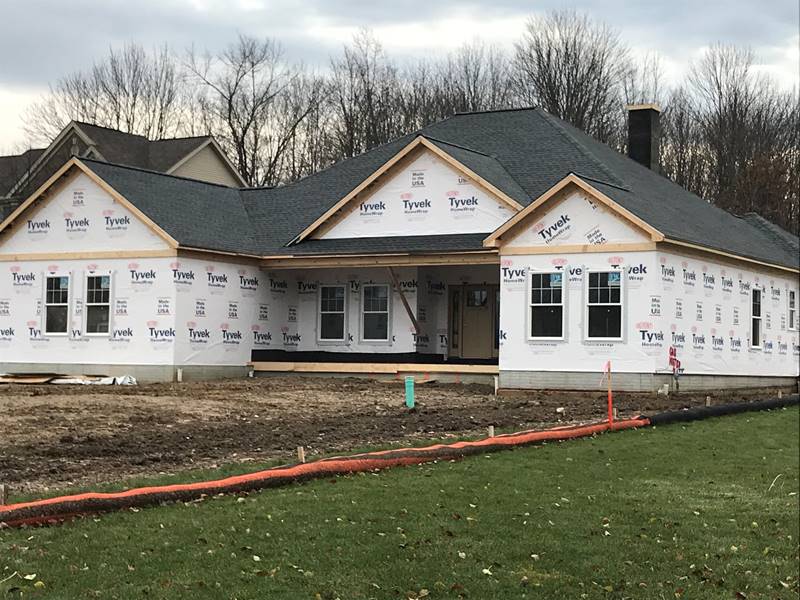Economy

HARDI/ITR Quarterly Forecast October 2016, Part 2
Written by Sandy Williams
October 25, 2016
Steel Market Update is a member of an association connected to the construction industry called HARDI. HARDI stands for Heating, Air-conditioning & Refrigeration Distributors International. HARDI and the Institute for Trend Research (ITR), an economic forecasting company, work together to gather economic data to provide a forecast to the HARDI members located in the United States and Canada. The information shared in our newsletter is only part of a much larger package seen by participating HARDI member companies.
In our last issue we covered forecasts for the Northeast, Mid-Atlantic, and Southeastern Region. Today we will cover the Great Lakes, Central, Southwestern and Western regions.
Great Lakes
Housing permits in the Great Lakes region were up 27 percent in the 12 months through August. ITR is expecting permits to increase into early 2018, flatten out and then decline in late 2018 as a mild recession begins. Michigan is leading the permit growth with a 38.9 percent increase during the period. Pennsylvania and West Virginia were in contraction but Pennsylvania is pulling back up into recovery. Home prices accelerated in Indiana, Kentucky and West Virginia in second quarter and slowed in the rest of the region. ITR forecasts a 19.5 percent growth for housing construction in 2016, +7.4 percent in 2017, and -0.6 percent in 2018.
Nonresidential spending was up 30.6 percent in the 12 months through August and will generally follow the same trend as ITR sees for housing; rising through 2017 and plateauing in 2018. Commercial construction was up a whopping 140.2 percent y/y in August and is perceived as a market for growth opportunities for HARDI members. Government and educational construction decreased during the period but retail was up 44.6 percent. Nonresidential growth is region wide with Ohio growing at the fastest pace. ITR expects a 35.9 percent growth rate in 2016, 5.3 percent in 2017, and a -17.9 percent in 2018.
Central
Residential permit authorizations increased in most of the region in August, up 8.5 percent y/y. Missouri, Iowa, South Dakota, Wisconsin, Nebraska and Minnesota all had double-digit gains on an annual basis in August and are accelerating with the exception of the leader of the pack, Missouri, which is beginning to slow after a 23.5 percent gain. ITR considers Colorado a long-term growth market but quarterly trends show a transition to slower growth. North Dakota, Kansas and Wyoming are below year ago levels for permit growth. Home prices increased in the region in second quarter but permit growth suggests stronger building rates may relieve the upward pressure on prices. ITR expects housing growth to gain 9.3 percent in 2016 and 4.7 percent in 2017 before slipping into recession with a rate of -0.5 in 2018.
Nonresidential construction spending grew 4.3 percent on an annual basis in August. ITR expects construction to accelerate into early 2017 before slowing for the remainder of the year. Construction growth is inconsistent in the region with Minnesota, Missouri and Nebraska strong but slowing and Colorado, Wyoming, South Dakota, Iowa, Kansas and Illinois below year ago levels. Medical construction is up 4.4 percent annually and a pipeline project in North Dakota will likely bring opportunities as oil prices rebound. The forecast is for 17.8 percent growth in 2016, 4.5 percent in 2017, and 1.1 percent in 2018.
Southwest
Housing permits were down 1.4 percent in the 12 months through August and are expected to continue to decline the remainder of the year before kicking into a growth trend through 2017 and 2018. Home prices are above year ago levels but decelerating in all states except Oklahoma. Texas home prices were up 7 percent on quarterly basis which may stimulate new construction. ITR expects housing construction to be down 4.3 percent in 2016, up 12.2 percent in 2017 and up 4.9 percent in 2018.
Nonresidential construction spending was up 24.5 percent y/y in August but a mild decline is expected before construction turn upwards again in early 2017. Medical construction is the predicted growth segment for the region with an August y/y increase of 67.9 percent. Commercial construction was also strong with a 44.2 percent increase. Government construction is declining with limited opportunities for HARDI activity. Louisiana is in robust acceleration, said ITR, while New Mexico, in decline, will provide little construction opportunities. Nonresidential construction is expected to grow 5.7 percent in 2016, 23.3 percent in 2017, and -5.9 percent in 2018.
West
ITR expects nonresidential construction to be “virtually flat” for the remainder of 2016, rise in 2017, and enter a general decline in late 2018. Washington and Hawaii are the weakest states for permit growth and new construction. Opportunities are likely soon in California as it transitions to Phase B, Accelerating Growth. Home price growth varies in the Western states but are all showing signs of growing, says ITR. ITR is forecasting 3.2 percent growth for 2016, 12.6 percent for 2017, and -2.4 percent for 2018.
Nonresidential construction spending declined 0.1 percent y/y in August and was considered a brief dip on an overall growth trend. Construction is expected to accelerate into the second half of 2017 before reaching a cyclic decline in 2018. ITR expects construction in the West to avoid recession effects until the last half of 2018. Oregon has the strongest prospects with areas of weakness in Alaska, Idaho and California. The ITR forecast is 14.2 percent growth in 2016, 31.1 percent in 2017, and -15.4 percent in 2018.

Sandy Williams
Read more from Sandy WilliamsLatest in Economy

Fed Beige Book: Economy improves, but manufacturing weak
While general economic conditions across the US improved slightly over the last six weeks, activity in the manufacturing sector was weak, according to the Fed’s latest Beige Book report.

SMU Community Chat: Simonson with the latest on construction
A lot of economists were predicting a recession last year. Ken Simonson, chief economist for The Associated General Contractors of America (AGC), wasn’t one of them.

Housing starts slip to seven-month low in March
Following a strong February, US housing starts eased through March to a seven-month low, according to the most recent data from the US Census Bureau.

Manufacturing activity in New York state continues to soften
New York state saw a continued decline in manufacturing activity in April, according to the latest Empire State Manufacturing Survey from the Federal Reserve Bank of New York

Worldsteel projects steel demand to grow 1.7% this year
Global steel demand will reach roughly 1.793 million metric tons (1.976 million short tons) this year, an increase of 1.7% over 2023, the World Steel Association (worldsteel) said in its updated Short Range Outlook report. The gain will come after a 0.5% contraction in steel demand in 2023. Demand is forecasted to increase another 1.2% […]
